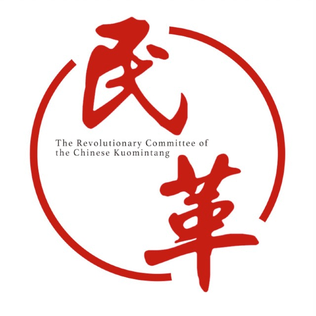Many people do not realize that China has a multi-party political system. A thread with the eight parties that were created before 1949 as part of the united front strategy and continue to play a key role in the Political Consultative Conference.
A small 🧵1/9 #TwoSessions
A small 🧵1/9 #TwoSessions

1) The Revolutionary Committee of the Chinese Kuomintang.
Developed from the Left Kuomintang that supported the CPC before China’s liberation in 1949. 2/9
Developed from the Left Kuomintang that supported the CPC before China’s liberation in 1949. 2/9

3) The China Democratic National Construction Association.
It mainly comprises entrepreneurs and participants in the economic sectors. 4/9
It mainly comprises entrepreneurs and participants in the economic sectors. 4/9

5) The Chinese Peasants and Workers Democratic Party.
Is predominantly composed of medical and health practitioners. 6/9
Is predominantly composed of medical and health practitioners. 6/9

6) The China Zhi Gong Party.
Is primarily composed of overseas Chinese who have returned home and representative figures with overseas connections (also acting as the China chapter of the Hongmen, a worldwide Chinese secret fraternal society). 7/9
Is primarily composed of overseas Chinese who have returned home and representative figures with overseas connections (also acting as the China chapter of the Hongmen, a worldwide Chinese secret fraternal society). 7/9

8) The Taiwan Democratic Self-Government League.
Represents proponents of socialism from the Taiwan region. 9/9
Represents proponents of socialism from the Taiwan region. 9/9

Thank you for reading!
If you enjoyed this thread:
1. Follow us @DongshengNews for more content
2. RT the tweet below to share this thread (it helps us grow)
If you enjoyed this thread:
1. Follow us @DongshengNews for more content
2. RT the tweet below to share this thread (it helps us grow)
https://twitter.com/1321346054835429376/status/1635370255772971032
If you like Tweets like this, you might enjoy our weekly digest, the "News on China".
In 6 minutes or less, we share news & analysis on China that cuts through the hype and gets to the point. New every Saturday in ENG, PT, & ES.
Join here: dongshengnews.org/en/subscribe/
In 6 minutes or less, we share news & analysis on China that cuts through the hype and gets to the point. New every Saturday in ENG, PT, & ES.
Join here: dongshengnews.org/en/subscribe/
• • •
Missing some Tweet in this thread? You can try to
force a refresh















